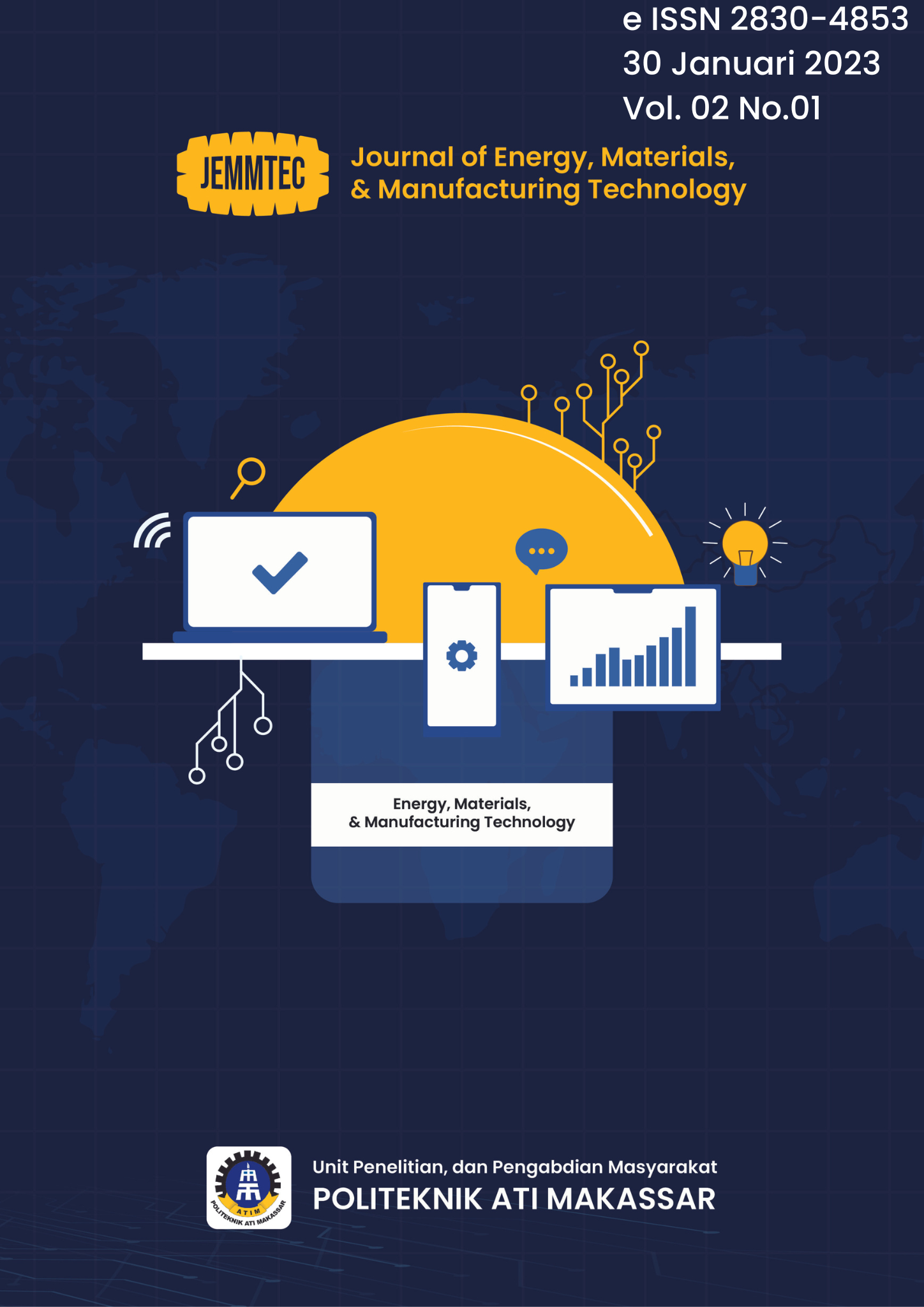Study of frame resistance characteristics of pineapple fruit cutting and peeling machines
DOI:
https://doi.org/10.61844/jemmtec.v2i01.279Abstract
The maximum stress theory states that failure occurs when the maximum principal stress in a component reaches the maximum stress value at the yield point. This theory is used to predict the failure of brittle materials. However, in an elastic body that is subjected to a three-dimensional load, complex stresses are created where each point of the body has stresses acting in different directions. Pineapple fruit cutting and peeling machines certainly have a power amount that can cause the resistance of the machine frame to be disrupted during operation. The purpose of this study is to design the frame of the pineapple cutting and peeling machine so that it is able to withstand the workload and the durability of the frame can be maintained, such as by making the design of the frame structure, assigning materials, determining constraints and loading, and other things that are deemed necessary in fulfilling the research objectives. This study uses experimental methods and literature. The literature method consists of the researcher using supporting theory from previous studies in such a way that the research is important from the point of view of the person being studied. The experimental method consists of researchers conducting direct experiments by designing research tools. The frame structure of this pineapple peeling and cutting machine has a length of 1000 mm, a width of 662 mm, and a height of 1000 mm. At the same time, the machine body is 400 mm long, 370 mm wide, and 2000 mm high. Holocron is used as the body material, with a thickness of 3 mm, specified at the time of modeling for each part to be manufactured.










